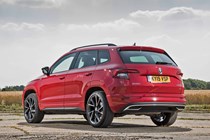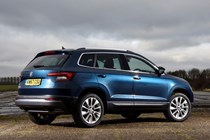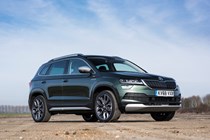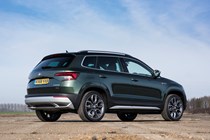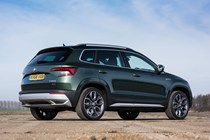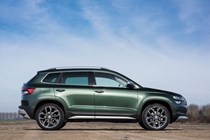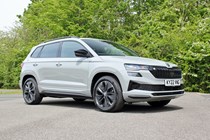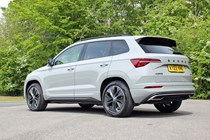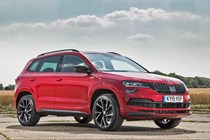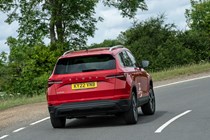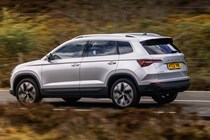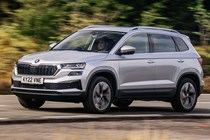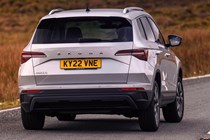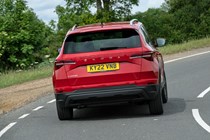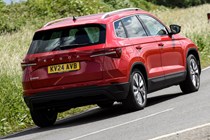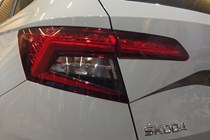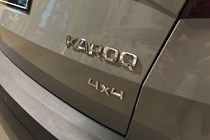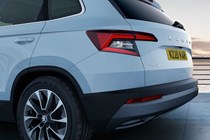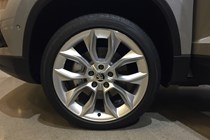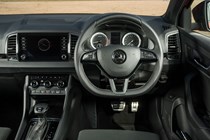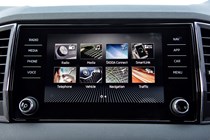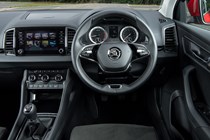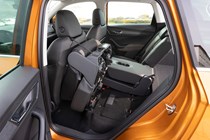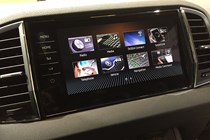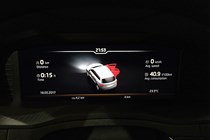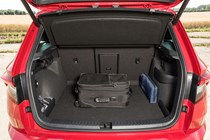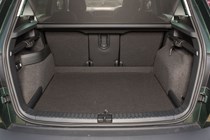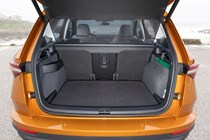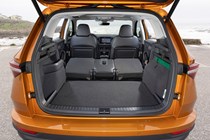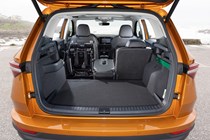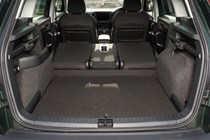
Skoda Karoq running costs and reliability
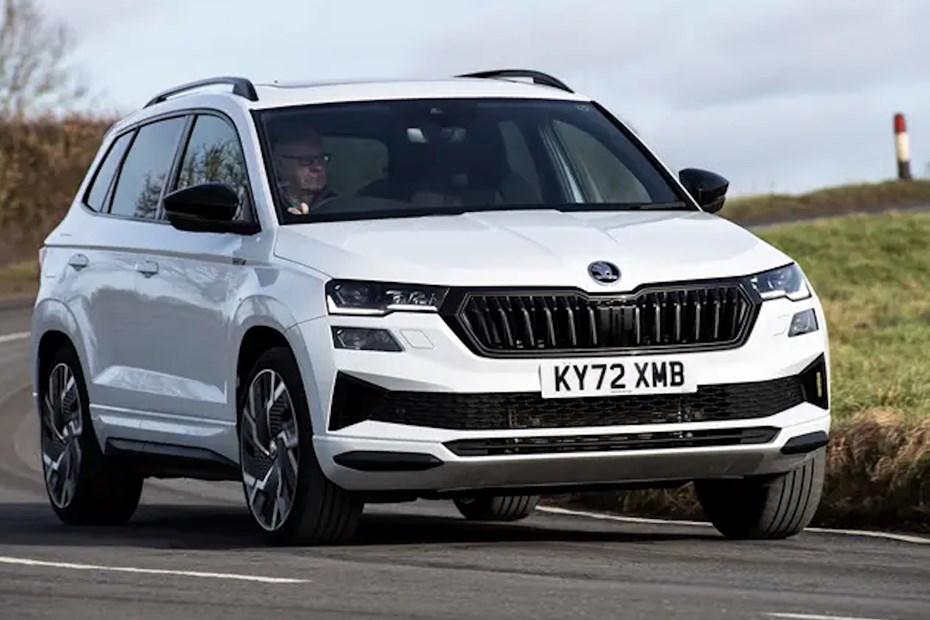
Miles per pound (mpp) ⓘ
| Petrol engines | 4.8 - 7.2 mpp |
|---|---|
| Diesel engines | 5.1 - 7.6 mpp |
Fuel economy ⓘ
| Petrol engines | 32.8 - 49 mpg |
|---|---|
| Diesel engines | 39.8 - 59.4 mpg |
- Choice of modern petrol and diesel engines
- No super-economical hybrid versions
- Servicing should be reasonably priced
What are the running costs?
Running costs for the Skoda Karoq are impressively low even though there are no hybrid models with super-high on-paper fuel economy figures. For some buyers this will automatically put rivals such as the Ford Kuga plug-in hybrid in a preferential position, but don’t rule the Karoq out just yet.
The engine range consists of three different turbocharged petrol units – 110hp 1.0-litre TSI Evo, 150hp 1.5-litre TSI Evo and 190hp 2.0-litre TSI Evo – and two variants of 2.0-litre TDI Evo turbodiesel, one with 116hp and another with 150hp.
View detailed mpg and CO2 figures on the Skoda Karoq spec pages
If you want the most efficient petrol engine above all else, the 1.0-litre is the way to go. However, the 1.5-litre version has active cylinder deactivation to save fuel when cruising, and offers more muscle on the motorway. Meanwhile, the Evo diesels are the latest tech from the Volkswagen Group, and use a twin-dosing selective catalytic reduction system to reduce harmful emissions – TDI remains the best bet for maximum economy on longer journeys, although whether that’s worth the extra purchase cost is even more marginal these days.

Opting for a DSG automatic or 4x4 version of the Karoq will reduce efficiency, but not by a huge amount in regular driving. Besides, you’ll also see a drop if you opt for a trim level with larger wheels.
Servicing and warranty
Servicing intervals are once a year or every 20,000 miles. Skoda servicing prices are among the more reasonable around.
The standard warranty is for three years or 60,000 miles, whichever comes sooner. Skoda offers extended warranty and servicing plans at extra cost, and these are good value.
Reliability
- Good overall levels of reliability
- Build quality appears generally strong
- Beware of expensive repairs once outside of the standard warranty
Skoda has earned itself a good reputation for reliability over the years, producing a wide range of well-built, reliable cars. The Karoq shares plenty of parts with other Volkswagen Group products, so there shouldn’t be any nasty surprises, and typically, this Skoda performs well in customer satisfaction surveys. But that doesn’t make it perfect.
Owners’ forums show these cars suffering with a wide range of mostly minor niggles, and there have been a number of official safety recalls for manufacturing errors as well. If buying used, check to see that any applicable ones have been carried out.
A sound piece of advice would be to extend the Karoq’s warranty beyond the standard manufacturer offering. If something like the DSG transmission goes wrong, you could end up paying Volkswagen repair prices to fix your Skoda.
Ongoing running costs
| Road tax | £195 - £620 |
|---|---|
| Insurance group | 10 - 26 |
Get an insurance quote with

|
|



